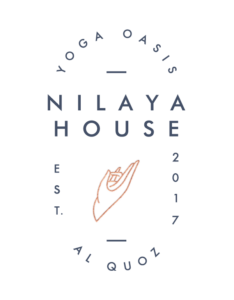Join us at Nilaya House on May 25 and meet some of our certified teachers for a FULL DAY of Iyengar Yoga classes. This is a FREE event open to all – existing students and those new to Iyengar Yoga.
Iyengar Yoga, named after and developed by B. K. S. Iyengar, and described in his bestselling 1966 book Light on Yoga, is a form of Hatha yoga that has an emphasis on detail, precision and alignment in the performance of posture and breath control. Read on for more details about Iyengar Yoga written by Helen Clear from Penrith Yoga School.
BKS Iyengar
Iyengar yoga takes the name of its founder BKS Iyengar, who died in 2014, aged 95. Until only a few months before he died he was still practising yoga, and actively involved in the yoga institute at Pune, India. The teaching style that Iyengar developed is characterised by the use of props, precise instruction and a focus on alignment. We commonly use visual demonstrations and sometimes help with adjustments. Teachers of Iyengar yoga undergo many years of training to gain certification.
Yoga That is Fun, Dynamic, Challenging but Safe
- During a class we usually cover a range of poses (or asanas) and sometimes variations of the same pose.
- Classes begin and end quietly, so students can walk out feeling invigorated, but relaxed.
- Yoga requires us to be attentive and develops our ability to be mindful.
- Yoga classes sometimes require strong physical exercise – but this is always geared to the student’s level of experience and ability.
- Poses are done in a way that will not cause injury. Students are given alternatives if certain poses are not suitable. And over time, through the practice of yoga, we learn how to modify poses with props or variations according to our needs.
- We look to ensure the poses are done safely, while also exploring our limits – in this way we can find out something new about ourselves and our bodies.
- Some classes are as short as 45 minutes, with the opportunity to do more than one class per week. This way, yoga becomes a regular part of our lives and facilitates the development of our practice.
- In class, students can learn by hearing instructions and seeing demonstrations. Students may also benefit from receiving adjustments while in a pose.
Yoga with Props
Yoga is for everyone, regardless of age, health status, current fitness and flexibility. Props are used in the Iyengar style of yoga to help us find proper alignment and practice safely. Props assist us to get into poses and can be used to support us in restorative poses.
Teaching Style
We all learn in different ways. So the Iyengar style of yoga employs a variety of techniques:
- Demonstration – you may be asked to watch the teacher or another student do a pose.
- Instruction – you may hear verbal instructions from the teacher.
- Adjustment – the teacher may give adjustments to assist students in a pose.
Each of these methods can aid the learning process and students may experience one or all of these methods of teaching in class.
If students do not wish to be adjusted by a teacher, we encourage them to let him or her know. We are fully committed to respecting the needs and wishes of students.
Teacher Training
To become an Iyengar yoga teacher, trainees go through a rigorous training process over many years. This involves study of anatomy and physiology, years of practice and an apprenticeship with an experienced, senior teacher. To gain certification, teachers must be assessed by a panel of senior Australian Iyengar teachers and gain their approval.
Further Reading
marrickvilleyoga.com.au/iyengar-different-forms-yoga/
Body
/iyengaryoga.asn.au/what-is-iyengar-yoga/
Originally Published on the Penrith Yoga Studio BLOG

